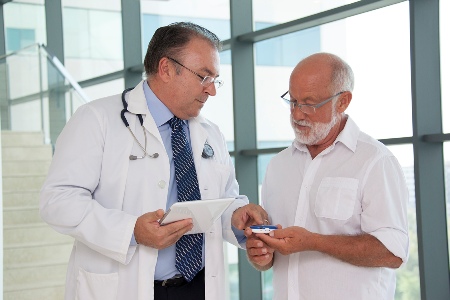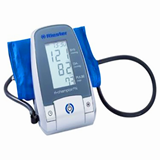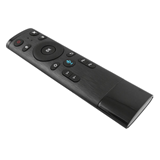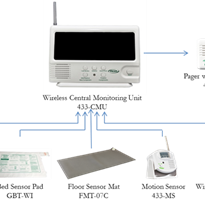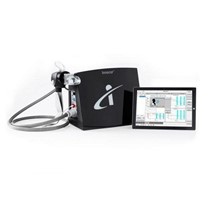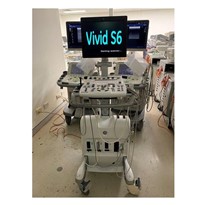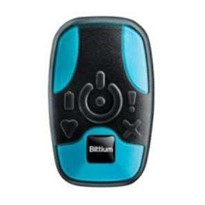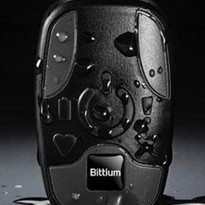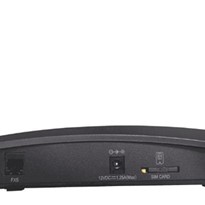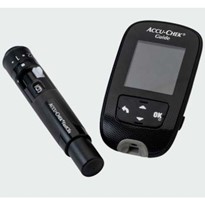Dr Brugada is the medical director of the Hospital Clinic in Barcelona, Spain, whose main interests lie in arrhythmia and sudden death risk prevention. He is heralded as the founder of the Brugada Syndrome – a genetic disease which is characterised by an abnormal electrocardiogram (ECG) and an increased risk of sudden cardiac death.
With the advent of new technologies in the sphere of wireless remote cardiac monitoring, Dr Brugada says, the possibilities are endless. In the past, there have been many different ways of monitoring patients for ECG signals, with some unmet needs in this area. Dr Brugada believes that with the advancements in today's technology, these needs will be met, and successfully.
One such technology, Nuubo, involves a simple fitted shirt worn by the patient, clipped to an ECG 'Minder', which records, stores and transmits the ECG signal via Bluetooth to a central monitoring suite or station – thereby doing away with the many cables and connections associated with previous methodologies.
Dr Brugada points out the ECG from the shirt has an extremely good signal with very few artefacts, even in the most challenging of conditions. If a patient was experiencing symptoms such as palpitations or tachycardia in extreme sport conditions – it was previously extremely difficult to obtain a good quality ECG signal due to the patient sweating, moving and breathing deeply and quickly.
Dr Brugada has documented examples in some of his own patients – with the recording of tachycardia in extreme conditions such as mountain-biking. In one case, the patient experienced palpitations only when he was at the peak of exercise. The new technology allowed Dr Brugada to record the ECG, and the tachycardia rhythm, at the moment of maximum exertion.
Dr Brugada believes there are three main scenarios where the wireless remote system will significantly revolutionise ECG methodologies currently used – holter monitoring, implantable monitors and monitoring systems.
As a holter monitor, the system allows for much simpler service with an indefinite monitoring period. As a result of the system's digital storage capabilities, holter monitoring abilities are extended beyond standard periods, and consequently greater comfort and flexibility is provided to the patient. The patient simply changes or washes the shirt, recharges the ECG Minder, and then continues with the monitoring process.
The Nuubo system may certainly replace the need for an implantable monitor. Dr Brugada has been working with patients with sporadic symptoms, for example, once per month, or even once every two months. The system allows the patient to wear the monitoring device during such specific periods of time, hence alleviating the need for an implantable device in most situations.
Finally, Dr Brugada says the device has a great future as a monitoring system. For patients that undergo cardiac surgery and require post-operative monitoring for longer, continuous periods of time, the system allows them to be monitored remotely – alleviating the need for them to lie in bed and remain connected to a fixed recording system. With the shirt and minder system, the patient is free to walk around.
Dr Brugada sees the future of monitoring systems changing completely with the introduction of this technology, and its ability to have several patients connected remotely with the use of a central monitoring suite, or station, to monitor all devices via Bluetooth technology.
AMA Medical Products general manager, Anthony Boyatzis says the Australian Medical Association in Western Australia is proud to be involved with the introduction of this technology into the Australian Market.
"The AMA (WA) is hoping that the utilisation of this revolutionary technology will elevate the country's position in technologically-advanced cardiac monitoring," he says.
Boyatzis believes this new system, with its ability to conduct wireless, remote cardiac monitoring in both real time and holter mode, will revolutionise cardiac diagnosis and assessment performed by cardiologists, sports physicians and general practitioners nationwide.
- Suppliers
- New to MedicalSearch? Book a Demo
- Advertise with us
- Login
- Email Marketing
- Buyers
- Get Quotes
- Articles & Ideas
- Login
- Subscribe to newsletter
- My Details
- Get Quotes
- Accident & Emergency Care
- Aged Care & Disability
- Anaesthesia & Respiratory Care
- Beauty & Wellness
- Cardiology & Cardiac Surgery
- Commercial Cleaning & Laundry Supplies
- Dental Care & Oral Surgery
- Diagnostic Instruments & Medical Imaging
- Disinfection & Sterilisation
- ENT & Audiology
- Gynaecology & Obstetrics
- Homecare & Consumer Medical
- Hospital Equipment & Supplies
- Intensive Care Unit
- Laboratory & Pathology
- Medical Apparel
- Medical Devices & Products
- Medical Fridges & Freezers
- Medical Storage & Filing
- Medical Waste Management
- Optometry & Ophthalmology
- Orthopaedics & Podiatry
- Paediatrics & Neonatology
- Patient Monitoring & Management
- Physiotherapy & Rehabilitation
- PPE & Infection Control
- Single Use Medical Consumables
- Surgical Tools & Supplies
- Treatment Beds, Tables & Couches
- Veterinary Equipment
- Wheelchairs & Mobility Aids
- Get Quotes
- Accident & Emergency Care
- Aged Care & Disability
- Anaesthesia & Respiratory Care
- Beauty & Wellness
- Cardiology & Cardiac Surgery
- Commercial Cleaning & Laundry Supplies
- Dental Care & Oral Surgery
- Diagnostic Instruments & Medical Imaging
- Disinfection & Sterilisation
- ENT & Audiology
- Gynaecology & Obstetrics
- Homecare & Consumer Medical
- Hospital Equipment & Supplies
- Intensive Care Unit
- Laboratory & Pathology
- Medical Apparel
- Medical Devices & Products
- Medical Fridges & Freezers
- Medical Storage & Filing
- Medical Waste Management
- Optometry & Ophthalmology
- Orthopaedics & Podiatry
- Paediatrics & Neonatology
- Patient Monitoring & Management
- Physiotherapy & Rehabilitation
- PPE & Infection Control
- Single Use Medical Consumables
- Surgical Tools & Supplies
- Treatment Beds, Tables & Couches
- Veterinary Equipment
- Wheelchairs & Mobility Aids
Trusted by 520,000 Australian medical buyers
Buyers
- Discover products & solutions
- Login
- Subscribe To Newsletter
- Browse All Products
- Read Articles
Suppliers
Advertise
- Promote your products & solutions
- New to MedicalSearch? Book a Demo
- Login / Forgot Password
- Advertise Your Products
- Success Stories
- Email Marketing
- Suppliers
- Advertise with us
- Login
- Email Marketing
- Buyers
- Get Quotes
- Articles & Ideas
- Login
- Subscribe to newsletter
- My Details
Get Quotes
- Accident & Emergency Care
- Aged Care & Disability
- Anaesthesia & Respiratory Care
- Beauty & Wellness
- Cardiology & Cardiac Surgery
- Commercial Cleaning & Laundry Supplies
- Dental Care & Oral Surgery
- Diagnostic Instruments & Medical Imaging
- Disinfection & Sterilisation
- ENT & Audiology
- Gynaecology & Obstetrics
- Homecare & Consumer Medical
- Hospital Equipment & Supplies
- Intensive Care Unit
- Laboratory & Pathology
- Medical Apparel
- Medical Devices & Products
- Medical Fridges & Freezers
- Medical Storage & Filing
- Medical Waste Management
- Optometry & Ophthalmology
- Orthopaedics & Podiatry
- Paediatrics & Neonatology
- Patient Monitoring & Management
- Physiotherapy & Rehabilitation
- PPE & Infection Control
- Single Use Medical Consumables
- Surgical Tools & Supplies
- Treatment Beds, Tables & Couches
- Veterinary Equipment
- Wheelchairs & Mobility Aids
Get Quotes
- Accident & Emergency Care
- Aged Care & Disability
- Anaesthesia & Respiratory Care
- Beauty & Wellness
- Cardiology & Cardiac Surgery
- Commercial Cleaning & Laundry Supplies
- Dental Care & Oral Surgery
- Diagnostic Instruments & Medical Imaging
- Disinfection & Sterilisation
- ENT & Audiology
- Gynaecology & Obstetrics
- Homecare & Consumer Medical
- Hospital Equipment & Supplies
- Intensive Care Unit
- Laboratory & Pathology
- Medical Apparel
- Medical Devices & Products
- Medical Fridges & Freezers
- Medical Storage & Filing
- Medical Waste Management
- Optometry & Ophthalmology
- Orthopaedics & Podiatry
- Paediatrics & Neonatology
- Patient Monitoring & Management
- Physiotherapy & Rehabilitation
- PPE & Infection Control
- Single Use Medical Consumables
- Surgical Tools & Supplies
- Treatment Beds, Tables & Couches
- Veterinary Equipment
- Wheelchairs & Mobility Aids
Trusted by 520,000 Australian medical buyers


